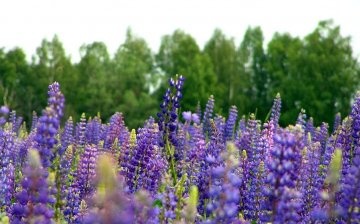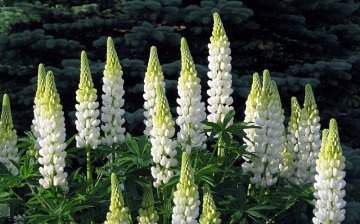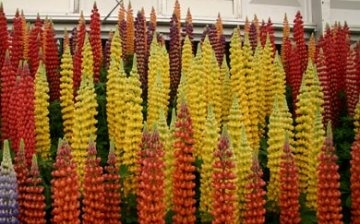Lupine multifoliate at their summer cottage
Wolf beans or perennial lupine is a perennial plant that even a novice grower can grow. It can grow on almost any soil, moreover, nodule bacteria living on its powerful taproot bind free nitrogen in the air and enrich the soil with it, like other legumes. The green mass of lupine serves as an excellent green manure that reduces the acidity of the soil. The flowering of a plant planted in a sunny place will be more abundant, but lupine also tolerates partial shade well.
Lupine multifoliate forms long flowering racemes with blue-blue, purple, yellow, red or multicolored moth flowers. The flowers are framed by beautiful openwork leaves arranged on separate cuttings. In central Russia, this perennial usually blooms in June. Fading brushes are cut off, after which the plant gives new shoots. Sometimes flowering lasts all summer, until autumn frosts. All lupine care consists in weeding and loosening. It even reproduces most often by self-seeding, but for this it still needs to be planted one day.
Lupine seeds are large and give excellent strong shoots. They are sown directly into the soil. If you do this in early spring, it is better to pre-soak them. Dry seeds are sown before winter immediately to a permanent place, lupine does not tolerate transplanting well. The most beautiful specimens can be propagated vegetatively. To do this, you need to be able to cut a bud, from which a new shoot develops, together with a piece of root, and plant it in the ground. In about a month, it will take root.










